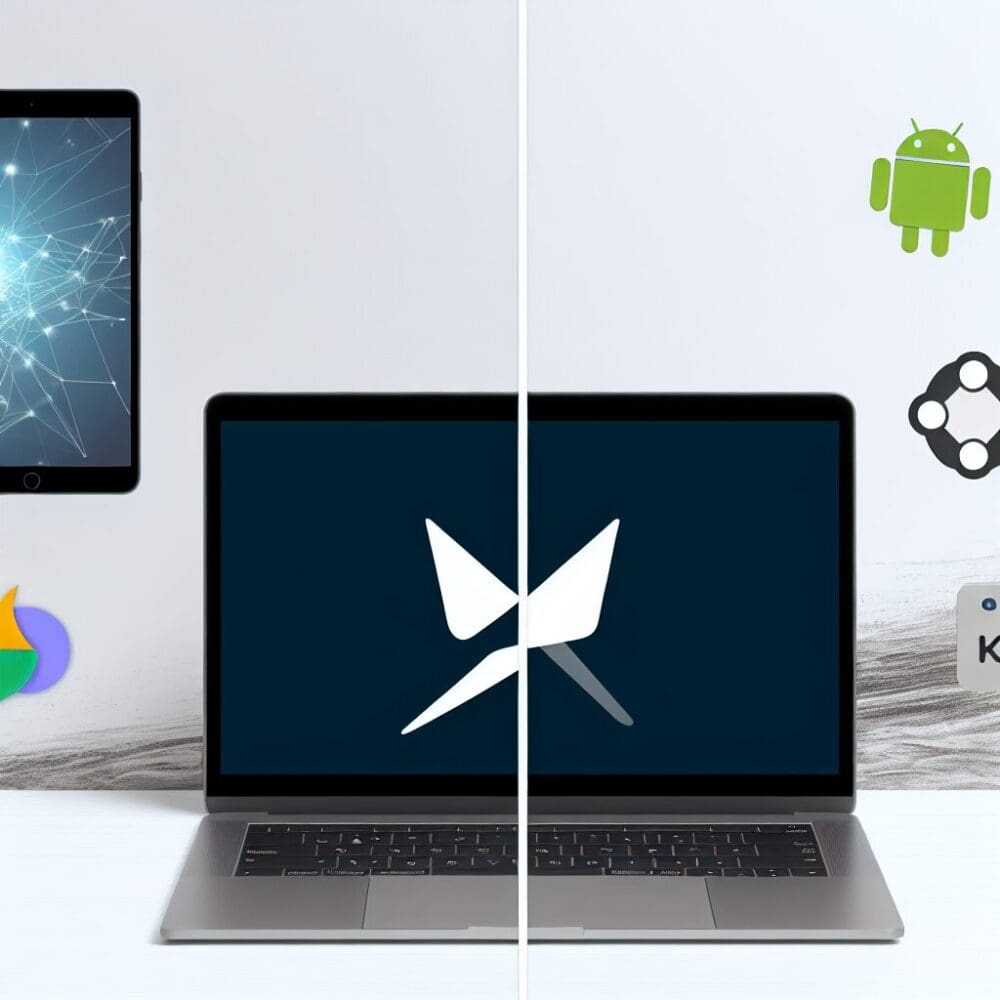“`html
Kotlin Multiplatform vs Flutter: Choosing the Best for Your App Development
Introduction: Navigating the Cross-Platform Development Arena
In today’s fast-evolving technological landscape, cross-platform app development has become crucial for businesses aiming to maximize their reach and optimize resources. The choice of framework can profoundly influence the success of your mobile applications. Two frameworks that stand out in the cross-platform field are Kotlin Multiplatform and Flutter. Each presents unique capabilities and advantages in the hybrid app development landscape, leading many developers and businesses to ask the million-dollar question: Which one’s the best for my project?
What is Kotlin Multiplatform?
Kotlin Multiplatform is a feature of Kotlin language, enabling developers to write, share, and reuse code across different platforms. By using Kotlin Multiplatform, developers can target iOS, Android, JavaScript, and other native platforms from a single codebase, allowing for more flexibility and reduced development time.
Strengths of Kotlin Multiplatform
– Code Reusability: Kotlin allows leveraging a single code base across multiple platforms, greatly reducing redundancy.
– Seamless Integration: Because Kotlin is designed with Android in mind, it integrates incredibly with all native Android functionalities.
– Highly Scalable: Thanks to its adaptability, Kotlin’s plugins and libraries can scale applications effortlessly without any performance penalties.
What is Flutter?
Developed by Google, Flutter is a UI toolkit designed for crafting natively compiled applications for mobile, web, and desktop from a single codebase. Flutter is popular for its rich widgets, rapid development cycle, and expressive and flexible UI toolkit.
Strengths of Flutter
– Hot Reload: Allows developers to view changes in real-time, significantly speeding up the development process.
– Rich Widgets: Flutter’s expansive library of widgets lets developers create customizable and unique UIs with ease.
– Consistent Performance: Flutter applications maintain high performance due to direct compilation into native ARM code.
Kotlin Multiplatform vs Flutter: Head-to-Head Comparison
Performance
– **Kotlin Multiplatform:** Performance closely aligns with native apps as it uses native UI components, ensuring high efficiency and interaction.
– **Flutter:** While Flutter’s Dart language and engine are optimized for performance, it lags slightly behind natively compiled applications in graphical-intensive scenarios.
Development Experience
– **Kotlin Multiplatform:** Familiarity with Kotlin ideally suits developers aiming for seamless integrations with existing Kotlin or Java projects. However, UI code is managed separately per platform, which can increase complexity.
– **Flutter:** Flutter’s “write once, run anywhere” approach, coupled with the hot reload feature, makes it appealing to developers prioritizing rapid implementation across platforms.
Community and Support
– **Kotlin Multiplatform:** Backed by JetBrains, Kotlin continues to grow with an enthusiastic developer community. Nonetheless, its community remains more niche compared to Flutter.
– **Flutter:** Benefit from the robust support of the Google ecosystem and a vibrant global developer community that actively contributes to its plugin ecosystem.
Learning Curve
– **Kotlin Multiplatform:** Simplifies cross-platform development, especially for existing Kotlin developers, by leveraging native platforms’ capabilities.
– **Flutter:** Presents a steeper learning curve for those new to Dart, though it simplifies by using a comprehensive set of widgets for all platforms.
Which Framework Suits Your Needs?
Selecting between Kotlin Multiplatform and Flutter depends on your specific project requirements, existing tech stack, and team expertise. Below are general guidelines to help inform your decision:
- Opt for Kotlin Multiplatform if:
- Your team is already proficient in Kotlin/Java development.
- You aim to maintain high performance with close to native capabilities.
- Your focus is on code reuse for business logic across platforms while handling UI natively.
- Choose Flutter if:
- Quick development with a single codebase and expressive UIs are your priorities.
- You prefer a rich collection of widgets and a flexible UI toolkit.
- Your development team is inclined towards using Google’s ecosystem or is fluent in Dart.
Conclusion: Making the Informed Choice
In conclusion, both Kotlin Multiplatform and Flutter are exceptional frameworks in the arsenal of modern app developers. They offer unique advantages, and the choice between them should be guided by project-specific considerations and future design goals. Evaluating your strategic requirements, team competencies, and long-term app goals is crucial to leverage the full potential of either framework. Choose wisely, and pave the path to successful app development that resonates with your audience.
“`




